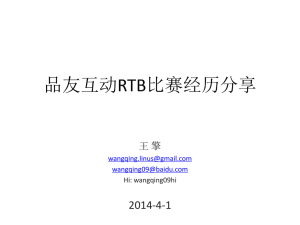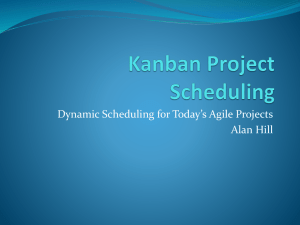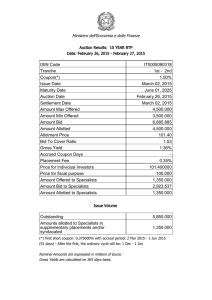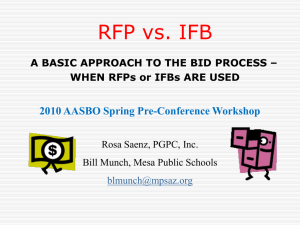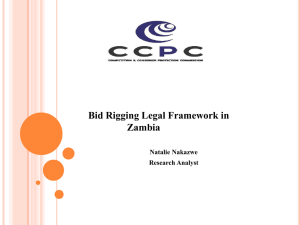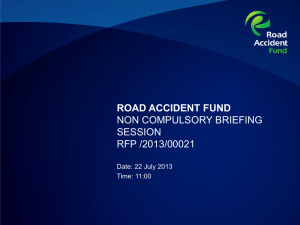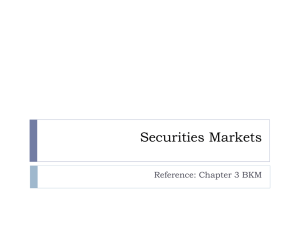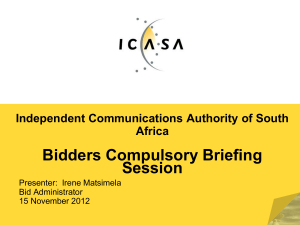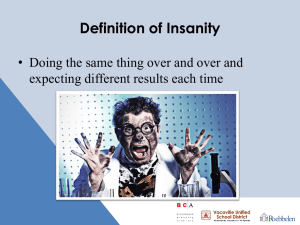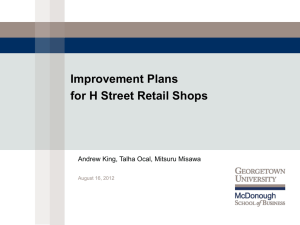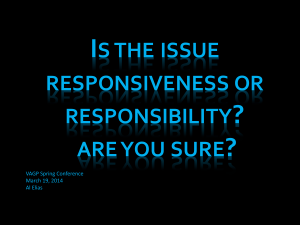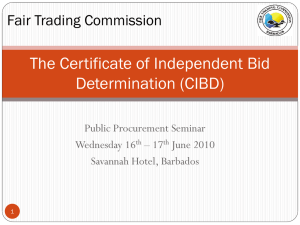Darren Craig - Anti-trust - Asphalt Pavement Association of Indiana
advertisement
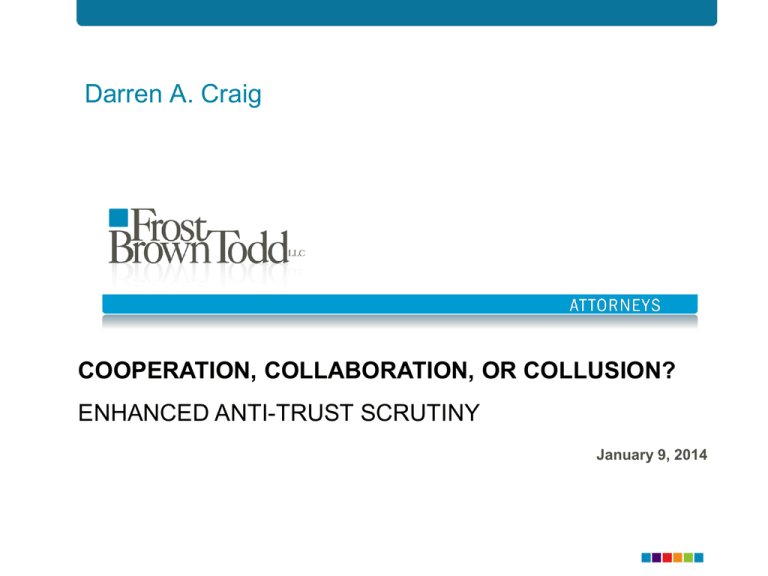
Darren A. Craig COOPERATION, COLLABORATION, OR COLLUSION? ENHANCED ANTI-TRUST SCRUTINY January 9, 2014 Introduction Increased antitrust scrutiny by Department of Justice Significant penalties for violations Special concerns for collaborations among competitors Ready-mix Concrete Case Study Price-fixing discussions at trade association meetings Criminal investigation, fines, and prison sentences Civil lawsuits Ready-mix Concrete Case Study (cont.) Investigation of six ready-mix concrete suppliers in central Indiana Investigation began with tip from informant Department of Justice and FBI raided homes and offices on one morning Amnesty program for first cooperator Reduced penalties for second cooperator Significant penalties for others Ready-mix Concrete Case Study (cont.) Penalties included prison sentences and fines Sentences ranged from 5 months to 27 months Fines totaled $35 million, including a single fine of $29.2 million, a record for domestic antitrust cases Ready-mix Concrete Case Study (cont.) Class action suit against six suppliers More than $50 million paid in settlements Sherman Antitrust Act Prohibits price fixing and monopolization Section 1 prohibits agreements among competitors in restraint of trade or commerce Agreement does not have to be in writing or even expressed Acts Forbidden by Sherman Act Per se illegal conduct Price fixing Agreements on output Bid rigging Market division Boycotts Other conduct may be prohibited under the “rule of reason.” Price Fixing Examples Agreement to raise or fix prices Not necessary that conspirators charge same price Eliminate or reduce discounts Adopt standard formula for computing prices Maintain price differentials Fix credit terms Refuse to advertise prices Agreements on Output Agreements to reduce or to restrict output Treated like price fixing Bid Rigging Examples Bid suppression Complementary bidding Bid rotation Bid rigging is often accompanied by subcontracting arrangements. Market Division Examples Customer allocation Territory allocation Product allocation Supplier allocation Detection and Enforcement How do government agencies detect price fixing, bid rigging, and other types of collusion? Identical prices may indicate a price-fixing conspiracy, especially when: Prices stay identical for a long time; Prices previously differed; or Price increases do not appear to be supported by increased costs. Discounts are eliminated, especially in a market where discounts were typical. Detection and Enforcement Bid or price patterns at odds with a competitive market. Same company always wins a particular bid. Same suppliers submit bids and each company takes turns being the low bidder. Some bids are much higher than published price lists, previous bids by the same firm, or engineering cost estimates. Fewer companies submit bids. Company bids significantly higher on some bids than others, with no apparent cost difference. Detection and Enforcement Bid or price patterns at odds with a competitive market (continued). Company bids significantly higher on some bids than others, with no apparent cost difference. Bid prices drop when a new or infrequent bidder submits a bid. Successful bidder subcontracts work to competitors that bid unsuccessfully on the same project. Company withdraws its successful bid and later receives a subcontract from the new winning bidder. Detection and Enforcement Suspicious statements. References to industry-wide price schedules. References to a competitor’s non-public pricing information. Statements that a particular bid “belongs” to a certain company. Acknowledgments that competitors discussed pricing or have an understanding about prices. Detection and Enforcement Suspicious behavior. Irregularities or similar handwriting, typeface, or stationery in the proposals or bid forms submitted by different companies. Bid or price documents contain white out or other physical alteration indicating last-minute price changes. Bidder requests a bid packet for itself and a competitor or submits its bid as well as competitor’s bid. Company brings multiple bids to a bid opening but submits its bid only after determining who else is bidding. Penalties Fines up to $100 million for corporations and $1 million for individuals Up to 10 years in prison Civil damages include treble damages and attorneys’ fees Other Antitrust Statutes Clayton Act Robinson-Patman Act FTC Act Indiana Antitrust Act Pro-competitive Collaborations Some competitor collaborations benefit competition Collaboration may help companies to: Expand into new markets Fund research and innovation Improve quality Lower production and other costs Areas for Collaboration Research and Development Production Marketing Distribution Sales Purchasing Rule of Reason What is the business purpose of agreement? Has the agreement caused competitive harm? Will agreement create or increase market power? If potential for competitive harm, is agreement reasonably necessary to achieve pro-competitive benefits? DOJ Business Review Program Department of Justice will give opinion on proposed joint venture or information sharing program Provided guidance to Colorado Asphalt Producers Association concerning R&D joint venture Provided guidance to construction associations concerning certification programs Conclusion Increased scrutiny – high stakes Some activities per se illegal Some competitor collaborations are procompetitive Carefully consider purpose and effect of collaboration Discussion / Questions CONTACT INFORMATION Darren A. Craig (317) 237-3975 dcraig@fbtlaw.com



